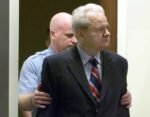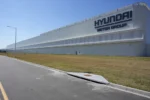After nearly two decades of successful operation, the University of Prishtina came under serious threat in 1989–1990, when Serbia began a systematic campaign to dismantle Albanian-language higher education in Kosovo.
With Slobodan Milosević’s rise to power, the Albanian-language school system in Kosovo especially the University of Prishtina suffered heavy blows. These developments marked the beginning of what would become a wide-scale repression of Albanian education in Kosovo.
The Serbian nationalist regime actively sought to suppress and eliminate Albanian-language education. The situation at the university deteriorated rapidly, mirroring the worsening conditions across Kosovo.
The University Center was no longer a safe haven for Albanian students and professors. Once the summer semester of the 1990/91 academic year ended, on June 28, 1991, the Serbian Assembly imposed violent administrative measures on the University of Pristina.
During the following academic year, a Serb-Montenegrin-led administration was installed, which increased student enrollment by 923 students, mainly Serbs brought in from other parts of Serbia and Montenegro.
On August 21, 1991, the Helsinki Group in Vienna released a statement declaring that Albanian-language education in Kosovo no longer existed, having been destroyed by Serbian authorities.
However, by early 1992, efforts were underway to find ways and methods to restart Albanian-language schooling.
On February 14, 1992, the University of Pristina announced that classes would resume on February 17, 1992, in private homes, marking the beginning of what became known as the “Home-Schooling System”, a symbol of Albanian educational resistance in Kosovo.







